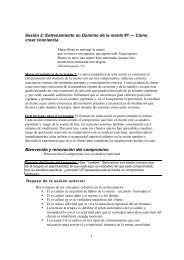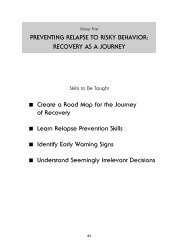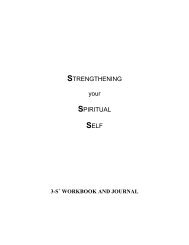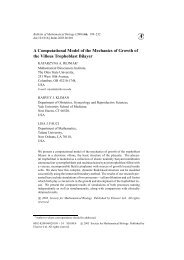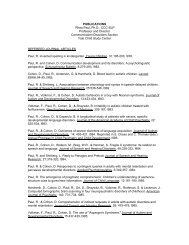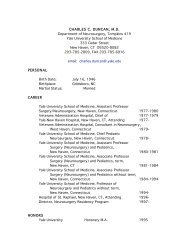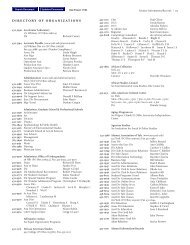The Spiritual Self Schema (3-S) Development Program
The Spiritual Self Schema (3-S) Development Program
The Spiritual Self Schema (3-S) Development Program
Create successful ePaper yourself
Turn your PDF publications into a flip-book with our unique Google optimized e-Paper software.
than we are of the present moment. <strong>The</strong>refore, the skill of mindfulness<br />
will need to be developed. As will be described shortly, this is a skill<br />
you will be developing with your meditation practice by learning to<br />
become aware of the breath against the nostrils. <strong>The</strong> breath is used in<br />
the practice of mindfulness meditation because, as it passes in and out,<br />
it produces physical sensations in and around the nostrils that can be<br />
experienced on a moment-by-moment basis.<br />
Right Concentration. Reaching the moment-by-moment<br />
destinations of your <strong>Spiritual</strong> path requires not only strong effort, and<br />
mindfulness, but also excellent concentration skills because you will<br />
need to remain fully aware of each moment as it arises and passes<br />
away. <strong>The</strong> practice of meditating on the breath will help you develop<br />
this important skill. When you begin to focus your awareness on the<br />
breath, you will find that your mind will soon wander away. You will<br />
learn to bring it back, but again it will wander away. And again you<br />
will bring it back, and again it will wander away. You will continue<br />
taming your "monkey mind" by gently, but firmly, bringing it back<br />
again and again each time it wanders away. Thus, you will develop<br />
your concentration and your ability to fully experience and express the<br />
moment-by-moment destinations of your personal <strong>Spiritual</strong> path.<br />
<strong>The</strong>re are numerous books available on the subject of meditation,<br />
many providing detailed instructions for beginners (see Reading<br />
List). What follows here are some general guidelines:<br />
Rehearse (practice)<br />
Location. Identify a suitable location in your home that is quiet and free<br />
of distractions and that can be used by you daily. If possible, this space<br />
should not be used by you for any other purpose. However, if this is not<br />
possible, select a space that you do not typically use for sleeping or<br />
relaxing (i.e., somewhere other than your bed or favorite armchair or<br />
any place where the risk for activation of habitual self-schemas is high).<br />
Time. Identify a suitable time of day (preferably shortly after arising<br />
when your mind is quiet) that you can set aside specifically for the<br />
purpose of meditation. If you are someone with a busy schedule, it is<br />
41



